Deadly Fibrecap / Spring / Toxic
Caution: This blog post delves into the realm of danger and toxicity. Today, we shed light on the notorious Deadly Fibrecaps (Inocybe erubescens), a mushroom that harbors a sinister secret.
While the world of fungi often delights with its culinary treasures, it also hides deadly traps. Join us as we explore the dark side of nature and uncover the unsettling truth behind these seemingly innocent mushrooms. Discover the distinguishing features that can help you identify Deadly Fibrecaps, learn about their toxic compounds, and understand the potential risks they pose to foragers and mushroom enthusiasts. Safety is paramount, and knowledge is your best defense. Brace yourself as we venture into the realm of danger, shedding light on the deadly toxicity of Deadly Fibrecaps. Remember, caution and awareness can save lives.
Common names
Deadly fibrecaps, red staining inocybe
Botanical name
Inocybe erubescens
Meaning of Scientific classification
The name derives from the genus name Inocybe meaning fibrous head and rubescens meaning becoming red.
Class: Agaricomycetes
Order: Agaricales
Kingdom: Fungi
Division: Basidiomycota
Could be confused with
Since it appears in spring and summer it could be confused with the St. Georges mushroom but this lacks the radial fibres and doesn’t stain red. It could also be confused with other inocybe species but as they are all considered deadly toxic and are generally avoided by foragers.
You can see from the image below of a deadly fibre cap and then st george that when the deadly fibre cap is young and its gills white there is a potential for confusing. I’ve heard people in spring say any white mushroom with white gills is safe to eat. So if you’re picking St Georges make sure to be clued up on Deadly Fibre Caps.
Click here for a full St George Identification Guide
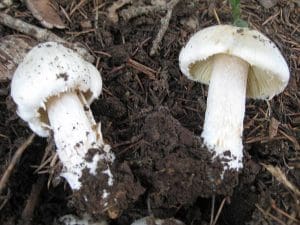
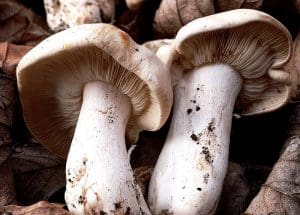
Distribution
Fairly common in southern parts of the UK, but rare in other parts of the country.
Key features and habitat of Deadly fibre cap mushrooms
Caps
The caps are generally 3-7 cm in diameter, conical when young, flattening when older but still retaining a central umbo with streaky radial fibres. The caps are quite often split in older specimens and stain red when damaged.
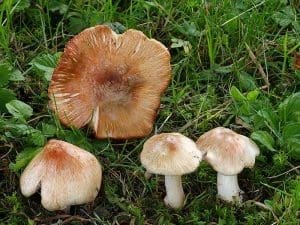
Gills
The gills start whitish and gradually turn red/brown with ages. The gills stain red when damaged, are crowded and can be adnate or adnexed.
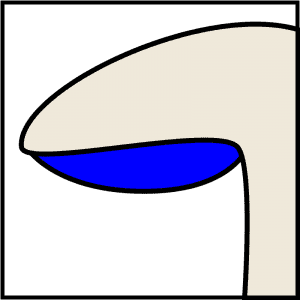
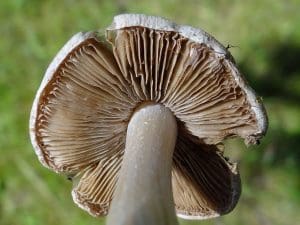
Habitat
They are mycorrhizal with deciduous trees most commonly beech and hornbeam on calcareous soils.
Spores
Dull Brown
Edible uses
Toxic. As the name suggests potentially deadly. They contains a deadly amount of the toxin muscarine. The antidote for which is atropine, the main toxin found in the Deadly Nightshade plant. Self-administration is not recommended!!!
Hints and tips
As most members of this family are suspected of being highly poisonous they should all be avoided.
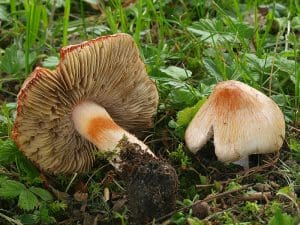




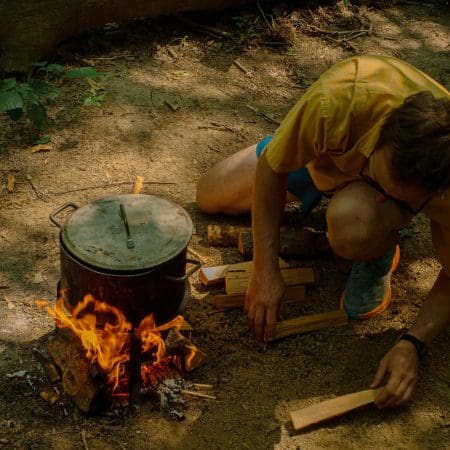

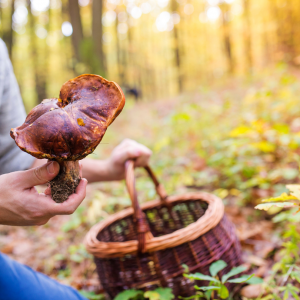
Leave a Reply
You must be logged in to post a comment.